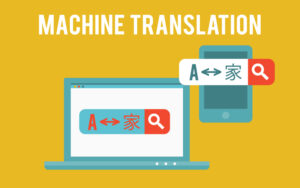
Translation has always played a crucial role in bridging the gap between languages and cultures, enabling communication and understanding on a global scale. As the world becomes increasingly interconnected and the need for effective communication across languages continues to grow, the field of translation is constantly evolving to meet the changing demands of our global society.
With the rapid advancements in technology, the future of translation is poised for significant transformation, offering new possibilities and opportunities for both translators and consumers of translation services. In this context, emerging technologies and trends such as machine translation, artificial intelligence, natural language processing, and big data are driving innovation and shaping the future of the translation industry. In this article, we will explore some of the key technologies and trends that are set to shape the future of translation and their potential impact on the industry.
Machine Translation

Machine translation has been around for a while, but recent advancements in artificial intelligence (AI) and natural language processing (NLP) have significantly improved the accuracy and speed of machine translation. Machine translation is now capable of translating vast amounts of text in real-time, making it an attractive option for businesses and individuals who need to translate large volumes of content quickly and affordably. However, it’s important to note that machine translation is still far from perfect and may require post-editing by a human translator.
Neural Machine Translation

Neural machine translation (NMT) is a type of machine translation that uses deep learning algorithms to improve the accuracy of machine translation. NMT is capable of learning from large amounts of data, making it more accurate and reliable than traditional rule-based machine translation. NMT is becoming increasingly popular, and many translation companies are starting to adopt it as their primary translation technology.
Big Data

Big data is transforming the translation industry by providing translators with access to vast amounts of data that can be used to improve translation quality and accuracy. Big data can be used to train machine translation engines, provide context for translators, and identify patterns and trends in language use. Big data is also helping to automate the translation process, making it faster and more efficient.
Cloud-based Translation

Cloud-based translation is becoming increasingly popular, as it allows translators to access translation software and data from anywhere, making it easier to work remotely. Cloud-based translation also enables real-time collaboration between translators and clients, making the translation process more efficient and streamlined.
Customization

Customization is becoming more important in the translation industry, as clients increasingly demand translations that are tailored to their specific needs and requirements. Customization can involve adapting translations to a particular target audience, incorporating cultural nuances and idioms, or using specific terminology and vocabulary.
Conclusion
The future of translation is exciting and full of opportunities, thanks to the emergence of new technologies and trends. Machine translation, neural machine translation, big data, cloud-based translation, and customization are set to transform the translation industry, making it faster, more accurate, and more efficient than ever before. However, it’s important to note that while technology can greatly improve the translation process, human translators will always be essential for ensuring high-quality translations that accurately convey the intended meaning and cultural nuances. As the world becomes increasingly interconnected and the need for effective communication across languages continues to grow, the translation industry will continue to evolve, driven by the latest technological advancements and trends. The future of translation is promising, and the possibilities are endless.

Post a Comment